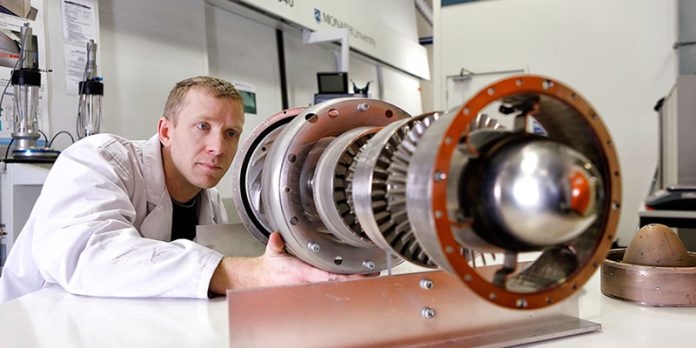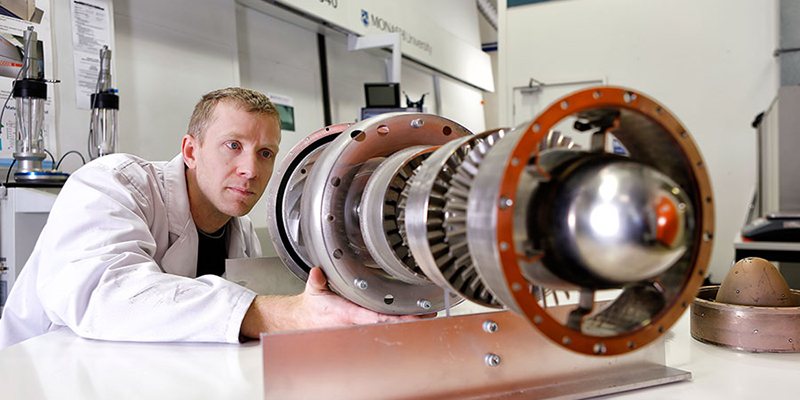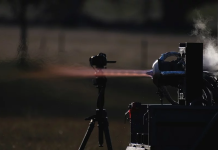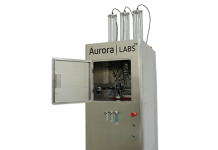
The Monash University-led team, which 3D printed two proof of concept jet engines last year in collaboration with CSIRO and Deakin University, has launched a new venture to manufacture components for a leading French aerospace company.

Melbourne-based Amaero Engineering—a spin out company from Monash University’s innovation cluster—has signed an agreement with the University and Safran Power Units to print turbojet components for French-based global aerospace and defence company Safran.
The company’s 3D printing technology produces lighter and stronger aircraft components more easily and with greater speed than traditional manufacturing techniques.
The collaborative agreement between Safran Power Units, Amaero and Monash University will see Amaero establish a new manufacturing facility on the Safran Power Units site in Toulouse, where the company plans to relocate two of the large printers they have customised for this precise manufacturing task.
“Our new facility will be embedded within the Safran Power Units factory in Toulouse and will make components for Safran’s auxiliary power units and turbojet engines,” said Mr Barrie Finnin, CEO Amaero.
Monash University’s Vice-Provost (Research and Research Infrastructure) Professor Ian Smith said that the Amaero-Safran agreement was “an excellent example” of the University’s research capabilities and its commercial impact on a global scale.
“I am delighted that Monash is contributing to global innovation and attracting business investment with our world-class research. The Amaero-Safran collaboration is a fabulous example of how universities and industry can link together to translate research into real commercial outcomes,” Professor Smith said.
“The new venture is part of Monash University’s large-scale investment in innovation on our Clayton campus, which brings together a dynamic cluster of research, research infrastructure and industry partners. Collectively we and our industry collaborators are driving technological change and advancing manufacturing – delivering real social and economic impact.”
The world’s first 3D printed jet engine was unveiled last year at the 2015 Melbourne International Airshow.
One of the two engines was on display at Safran, paving the way for development and commercialisation of this advanced technology.
“We proved that our team were world-leaders,” said Professor Xinhua Wu, Director of the Monash Centre for Additive Manufacturing.
“I’m delighted to see our technology leap from the laboratory to a factory at the heart of Europe’s aerospace industry in Toulouse.”
The factory is expected to enter serial production in the first quarter of 2017.
“Over the past five years, Safran Power Units and Monash University have successfully worked on a demonstration phase. Innovations generated by research and joint collaboration lead us to a new milestone: introducing 3D printing into production stage for major engine parts. We are committed to add tangible value to our products for the benefit of our customers,” declared François Tarel, CEO of Safran Power Units.
“The stakes are high: weight reduction, huge production cycles shortening and designs innovation. Safran Group advances and our partner leading-edge expertise allow us to stay ahead and to supply the most sophisticated components. This is not just a matter of 3D printing, the 3P rule applies: setting the right parameter for the right part and the right expected performance.”
The initial stage of the development of this advanced 3D metal printing technology has been supported by the Australian Government through the Advanced Manufacturing Cooperative Research Centre and Australian Research Council funding. CSIRO and Deakin University also participated in the original engine printing project.


















